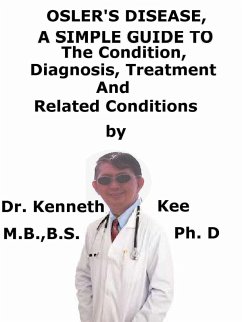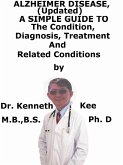Osler disease is an inherited blood vessel disease that produces bleeding from the mucous membranes of the nose, gastrointestinal tract, lungs or urinary tract.
Patients may also have abnormal blood vessels that bleed in the brain.
Osler Disease or Osler-Weber-Rendu syndrome (OWR) is also called hereditary hemorrhagic telangiectasia (HHT).
It is a genetic blood vessel disorder that often causes excessive bleeding.
It was first thought to be a bleeding disease but this disorder is caused by problems with the blood vessels themselves.
People with OWR may have missing capillaries in some of their blood vessels.
These abnormal blood vessels are termed arteriovenous malformations (AVM).
Because there is nothing to reduce the pressure of the blood before it moves into the veins, people with OWR often have strained veins that may ultimately rupture.
When large AVMs arise, hemorrhages can happen.
Hemorrhages in these locations can become life-threatening:
1. The brain
2. The lungs
3. The liver
4. The gastrointestinal tract
People with OWR also have abnormal blood vessels termed "telangiectasias" near the skin and mucosal surfaces.
These blood vessels are swollen or widened and are often seen as small red dots on the skin surface.
The disorder can be found throughout the world.
The syndrome involves about one in 5,000 people.
Many people with the disorder do not know they have it, so this number may really be higher.
There is no gender difference.
People with OWR have an abnormal gene that causes their blood vessels to form imperfectly.
OWR is an autosomal dominant genetic disease.
This means that only one parent requires having the abnormal gene to pass it on to their children.
OWR does not pass over a generation.
The signs and symptoms may differ greatly between family members.
If the patient has OWR, it is possible that the child could have a milder or more serious course.
In very rare cases, a child can be born with OWR even when none of the parents has the syndrome.
This occurs when one of the genes that cause OWR forms mutation in an egg or sperm cell.
Symptoms
Symptoms of OWR and their severity differ widely, even among family members.
A frequent sign of OWR is a large red birthmark, occasionally called a port wine stain.
A port-wine stain is produced by a collection of dilated blood vessels, and it may become darker in color as the person grows older.
Telangiectasias (small dilated blood vessels) are another frequent symptom of OWR.
They are often small red dots and are susceptible to bleeding.
The marks may be observed in young children or not until after puberty.
Telangiectasias can emerge on the:
1. Face
2. Lips
3. Tongue
4. Ears
5. Fingertips
6. Whites of the eyes
7. Gastrointestinal system
AVMs can happen anywhere inside the body.
The most frequent sites are:
1. The nose
2. The lungs
3. The gastrointestinal tract
4. The liver
5. The brain
6. The spine
The most frequent symptom of OWR is nosebleeds produced by telangiectasias in the nose.
In fact, this is often the first symptom of OWR.
Nosebleeds may occur daily or as rarely as twice per year.
When AVMs develop in the lungs, they can involve lung function.
A person with a lung AVM may have shortness of breath.
Diagnosis:
Blood test can examine for anemia, or iron deficiency in the blood.
CT scan can reveal internal AVMs, such as in the lungs, liver, and brain
Treatment:
Treatment is to stop bleeding and replace blood loss
Iron supplements
Transfusion
Estrogen
Aminocaproic acid
Electrocautery and argon beam ablation
Laser cautery
Embolization of blood vessel
Surgery
TABLE OF CONTENT
Introduction...
Dieser Download kann aus rechtlichen Gründen nur mit Rechnungsadresse in A, B, CY, CZ, D, DK, EW, E, FIN, F, GR, H, IRL, I, LT, L, LR, M, NL, PL, P, R, S, SLO, SK ausgeliefert werden.









